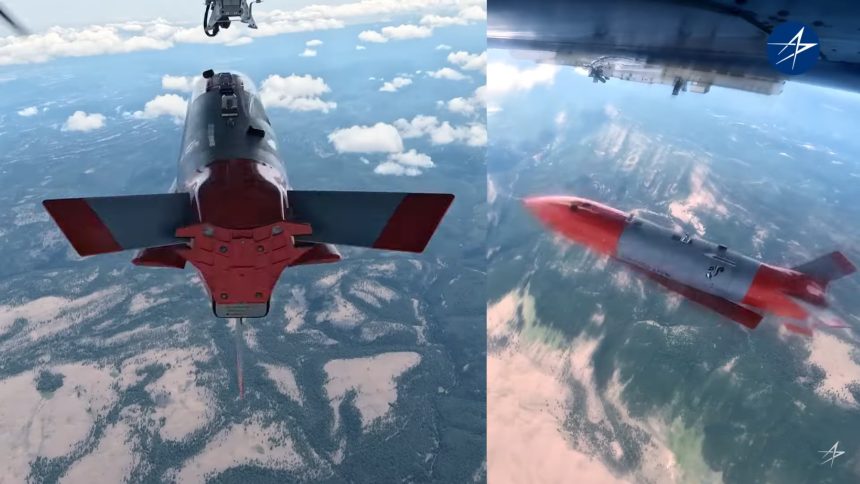The CMMT (Common Multi-Mission Truck) ‘D’ and ‘X missiles were launched from a Rapid Dragon cell and a test aircraft’s pylon, respectively.
Lockheed Martin has tested two of its CMMT (Common Multi-Mission Truck) air vehicles, the CMMT-D and the CMMT-X, in May and June 2025, the company announced on Jul. 16, 2025. The tests were the result of the designs evolving from concepts to demonstrator platforms in less than a year.
The CMMT-D test, which saw the weapon launched from a Rapid Dragon pallet’s cell, took place in May at the Tillamook UAS Test Range in Oregon and was led by a Lockheed Martin team from Orlando, Florida. A company team from Palmdale, California, meanwhile tested the CMMT-X at the Pendleton UAS Range in Oregon in June.
The CMMTs, which the company explains are pronounced as “comet”, are a family of systems that can be used for a variety of missions – from sensing to strike – and can be launched from both air and ground platforms. The development is consistent with a broader U.S. Air Force push to have cheap, scalable one-way guided munitions that, while blurring the lines between drones and cruise missiles, bring mass in a conventional war with peer rivals.
.@LockheedMartin successfully conducts flight tests of two CMMT configurations. Click for more: 🔗⬇️
— Lockheed Martin News (@LMNews) July 16, 2025
Lockheed says their swift transition from concepts to flight is a result of the new weapon being derived from the Speed Racer concept it unveiled four years ago. Agile development and model-based digital engineering tools were at the heart of the technical effort.
The Speed Racer concept was previously shown flying alongside the F-35s in renditions, with notional swappable payloads. The experimental low-cost “pathfinder” design was part of Project Carrera, exploring one ‘Distributed Teaming’ concept, described as ways for a piloted aircraft to partner with a team of autonomous systems “to offer greater mission flexibility at a low cost.”
CMMT-D
The CMMT-D, for the Rapid Dragon-type employment, was tested from a Bell UH-1H helicopter. The pallet carrying the missile was slung under the helicopter using long cables tethered to its landing skids. This missile has classic X-form tails, pop-out wings, and a hexagonal exhaust, which was sealed with an orange-coloured cover as this was an unpowered test.
Pallets of a similar design, but seemingly larger dimensions, were also used to carry the AGM-158B JASSM-ER (Joint Air-to-Surface Standoff Missile) for the Rapid Dragon program. The company specifically mentioned the use of the Rapid Dragon pallet during the test.
That system’s latest officially confirmed test took place on Nov. 9, 2022, with Rapid Dragon employed by an MC-130J Commando II in Norway, although there are reports about another possible test in 2023. Lockheed Martin’s press release adds that the CMMT-D is “designed to deploy from air mobility aircraft like the C-130.”
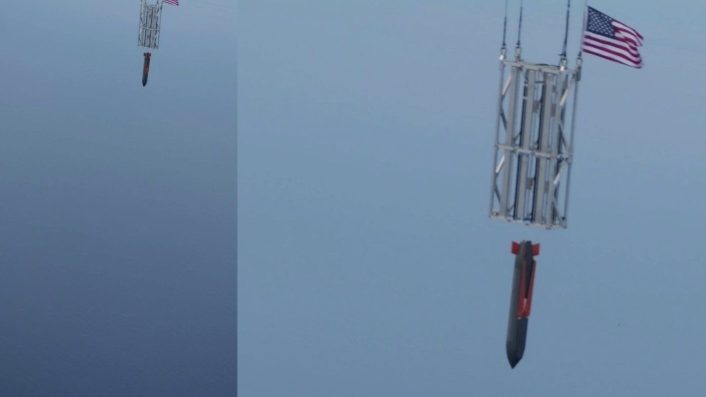
Lockheed Martin directly mentions the influence of the Rapid Dragon on CMMT-D’s palletized launch, while touching upon the test parameters: “[The team] dropped a CMMT-D test missile from a Rapid Dragon pallet, which was carried by a helicopter to an altitude of 14,500 feet to simulate a parachute descent. The CMMT-D deployed its wings and entered an unpowered glide following a safe release.”
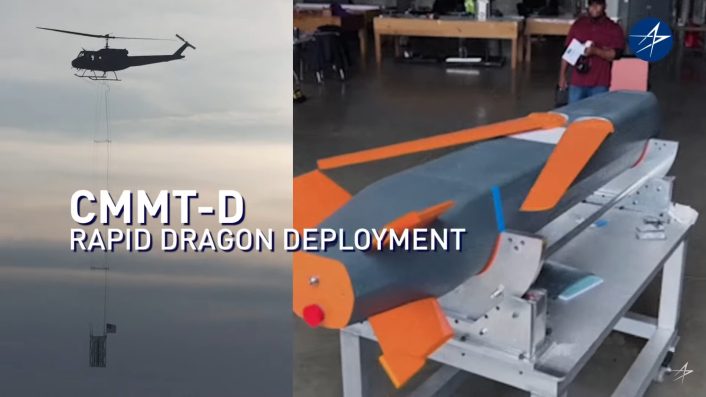
C-17 Globemaster IIIs have also been envisaged to conduct JASSM launches with Rapid Dragon. It is unclear if the company intends to test CMMT also on larger platforms like the C-130J.
It could be possible that, at least for now, Rapid Dragon’s relation with the CMMT-D is only limited to the design of the pallet and the overall concept. We are yet to see this translated into an official Air Force program using the MC-130Js or C-17s launching palletized CMMT-Ds too. An expanded Air Force order for the missile and future tests would shed more light on the matter.
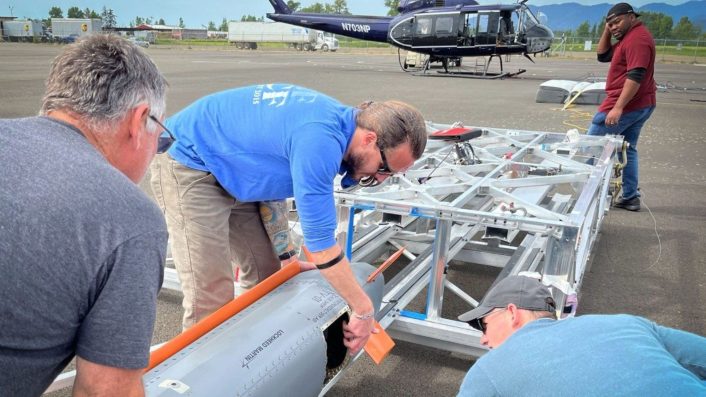
CMMT-D moved from initial concept design to first flight in just 10 months, due to efforts from the same “award-winning” team behind Rapid Dragon. “Rapid Dragon has deployed fielded cruise missiles over several years of demonstrations. This was its first deployment of a compact air vehicle in a tactically representative airborne environment,” the release said in another reference to the program.
Members of Polish Air Force, US Air Forces in Europe-Air Force Africa, and US Special Operations Command Europe conduct palletized precision effects cargo training onto a Polish C-130 Hercules on Nov. 8 in Powidz, Poland. Are those Joint Air-to-Surface Standoff Missiles? pic.twitter.com/OKH8MdQg0b
— Ryan Chan 陳家翹 (@ryankakiuchan) November 9, 2022
CMMT-X
The CMMT-X was tested from a Piper PA-31-350 (registration N20LX), owned by Lockheed Martin Corporation, carrying the CMMT-X on a centerline pylon. The missile has a Y-tail configuration and low pop-out wings, appearing very similar to the CMMT-D, except with a large flight data probe and smaller dimensions.
“They mounted CMMT-X to the pylon of a test aircraft and took to the skies for CMMT’s first pylon launch from an airborne aircraft,” Lockheed’s release said. “The vehicle safely separated from the launch craft, deployed its wings and lit its engine to initiate powered flight.”
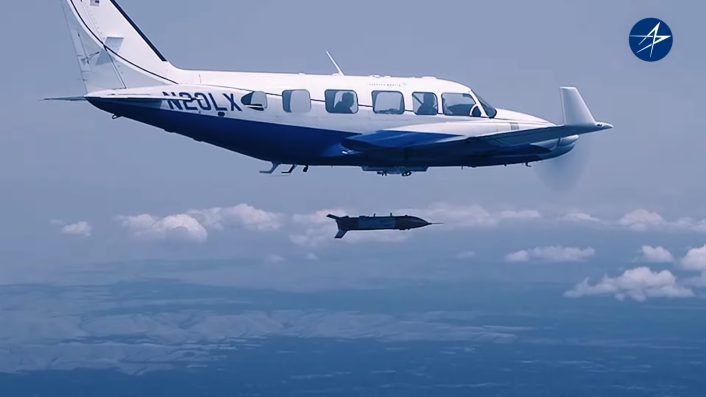
The company announced in February 2025 two configurations for the CMMT, without identifying their designations, describing them as “an-air-launched variant that deploys via the U.S. Air Force airlifters, fighters and bombers to put affordable mass on target, and a smaller long-range launched effect that deploys from rotary-wing platforms.” Thus, the former should refer to the CMMT-D and the latter to the CMMT-X.
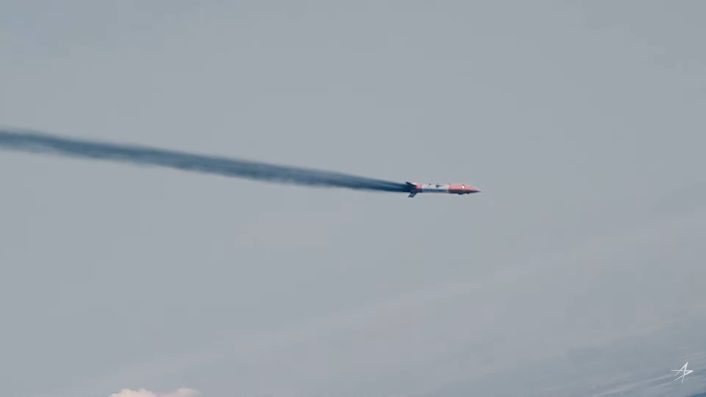
Speed Racer and digital engineering
The company has employed model digital engineering methods to design the missiles, similar to its Mako aeroballistic hypersonic missile pitched to the U.S. Air Force and Navy. CMMT-X evolved from the foundations of 2020’s Speed Racer, which explored the feasibility of expendable-class systems.
The team rewrote software to meet U.S. Air Force weapon open systems architecture standards and conducted ground testing to ensure airworthiness within just seven months. Lockheed has also digitized the designs, components, internal catalogues of all its missiles, proven designs and systems to accelerate future development with the CMMT being “the first to benefit from this evolution.”
“By kickstarting CMMT-X via SPEED RACER and applying commonality to a new CMMT-D design,” the company advanced development timelines for mature systems while also “saving time and money.”

